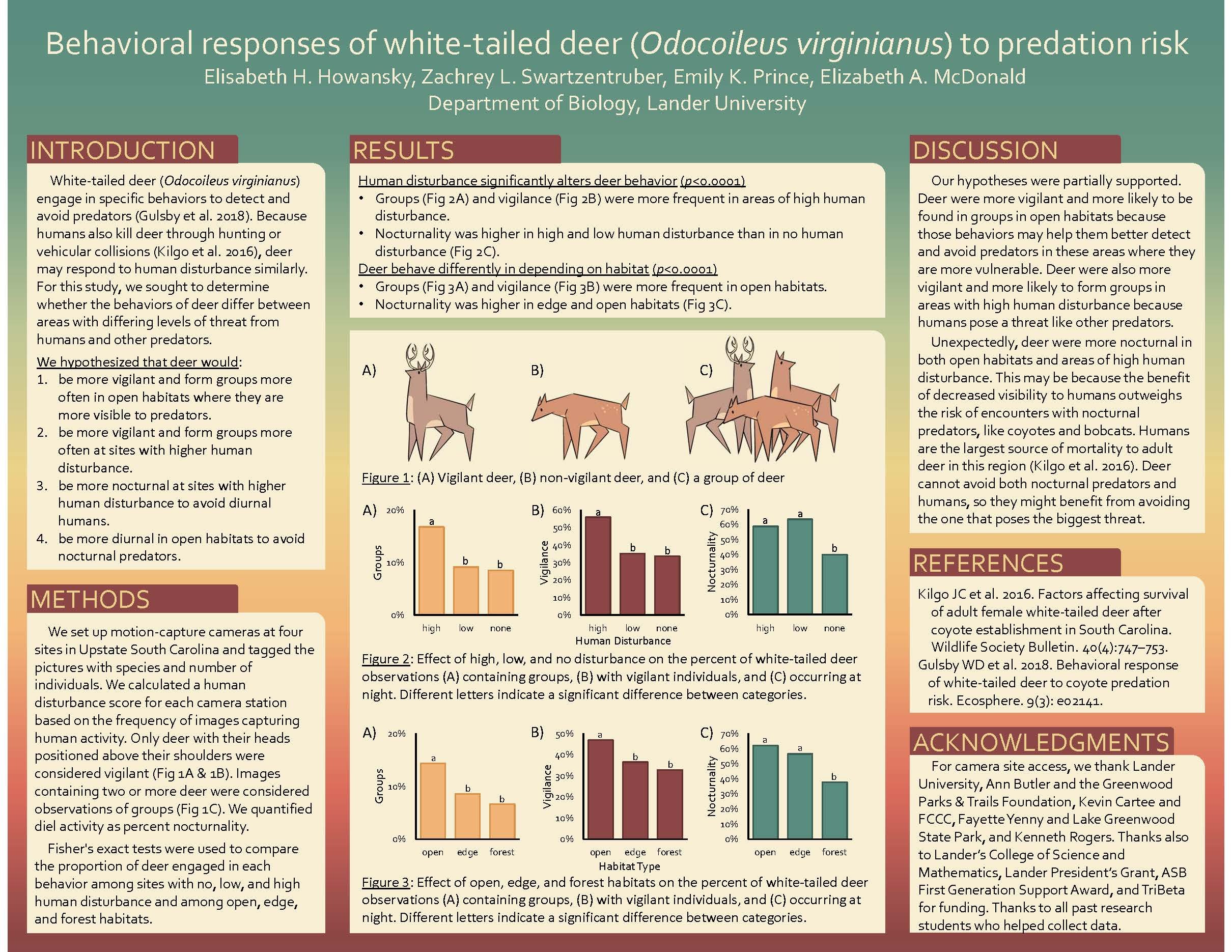Behavioral responses of white-tailed deer (Odocoileus virginianus) to predation risk
Elisa Howansky
White-tailed deer (Odocoileus virginianus) engage in specific behaviors to minimize predation risk. Because humans also pose a threat, deer may respond to human disturbance in the same ways they respond to other predators. For this study, we sought to determine whether the behaviors of deer differ between areas with differing levels of threat from humans and other predators. Because deer are more visible in open habitats, we hypothesized that with increasing habitat openness, deer would increase vigilance and group formation to better detect and avoid predators. We hypothesized that deer would also increase vigilance and group formation with increasing human disturbance. Lastly, we hypothesized that deer would be more nocturnal at sites with higher human disturbance to avoid encountering diurnal humans, but that deer would be more diurnal in open habitats to avoid nocturnal predators. To test these hypotheses, camera traps were set up in locations across Upstate South Carolina with varying habitat openness. We calculated a human disturbance score for each location using the frequency of images containing human activity. The observations were also used to calculate the group formation, vigilance, and nocturnality of deer. We found that deer were more vigilant and more likely to form groups in open habitats and sites with high human disturbance. We also found that nocturnality was higher in sites with high human disturbance and, contrary to our prediction, in more open habitats. This may be because the benefit of decreased visibility outweighs the risk of encounters with nocturnal predators. Overall, our results indicate that white-tailed deer do modify their behavior in response to perceived predation risk.
Elisa Howansky is a senior biology major and a member of the Honors College. Currently, they serve as historian for Lander’s chapter of Tribeta. They have presented their past research at SCURS 2022, and at ASB 2022, where they won honorable mention for the John C. Johnson Award for Excellence in Student Research. At Lander’s 2022 Academic Symposium they were the winner of the Judges’ Choice Award. Post-graduation, they plan to pursue a doctorate in behavioral ecology.
